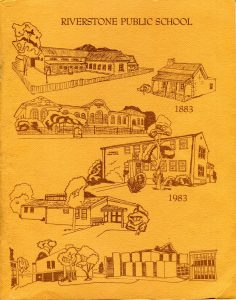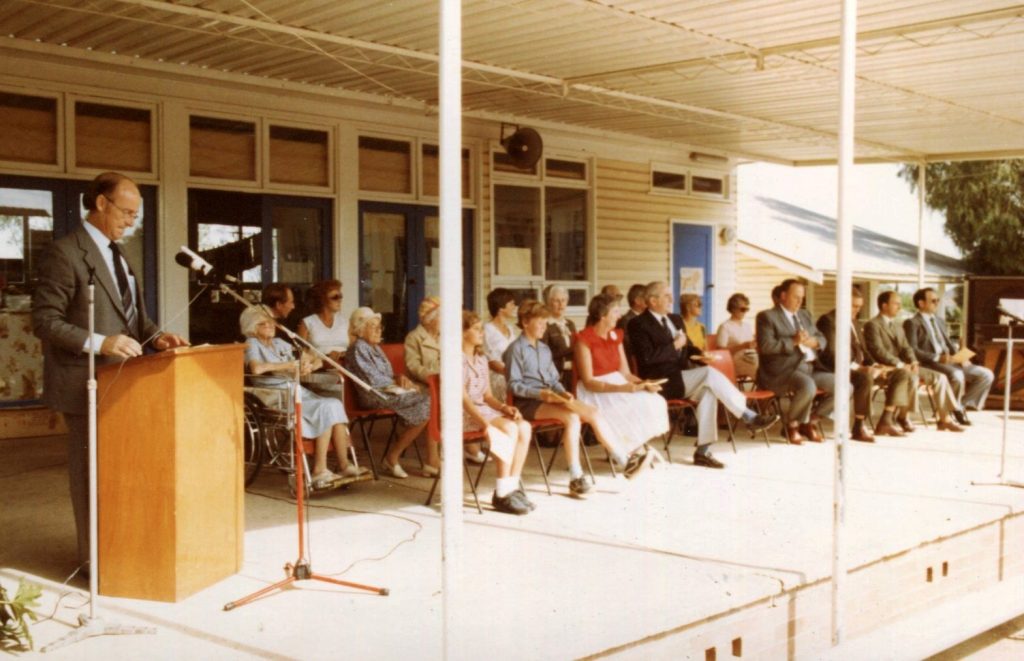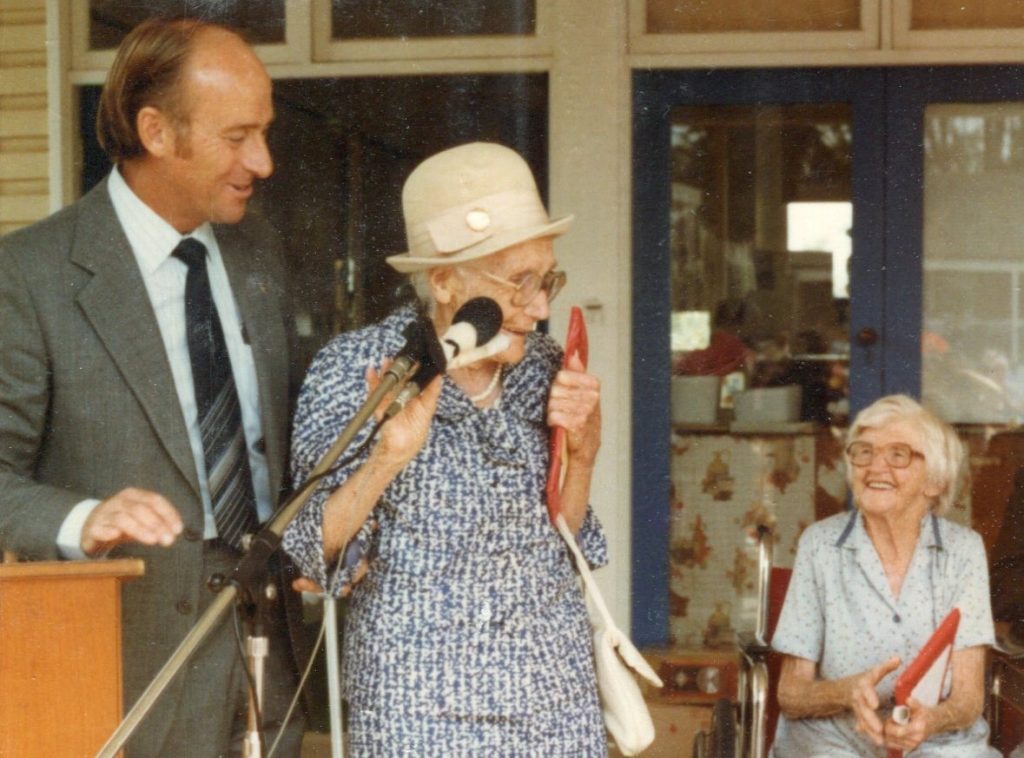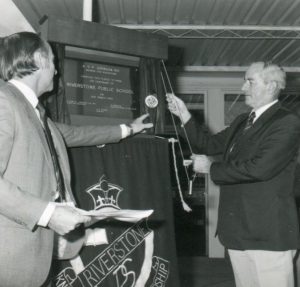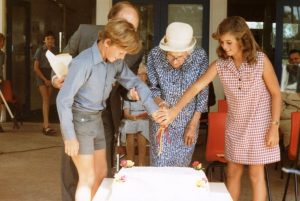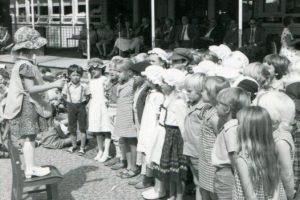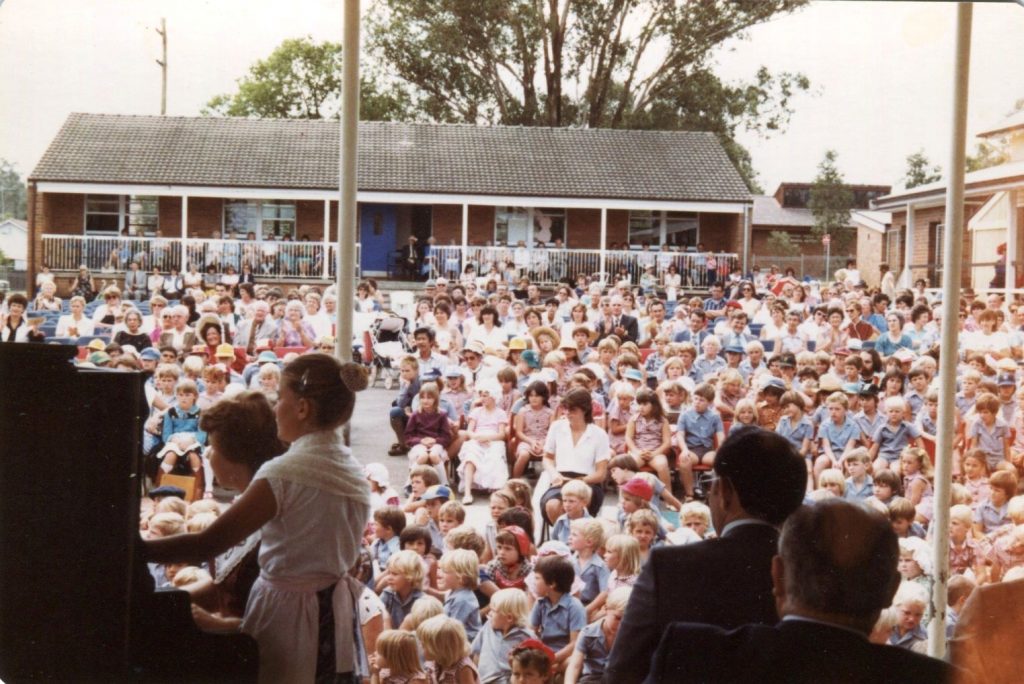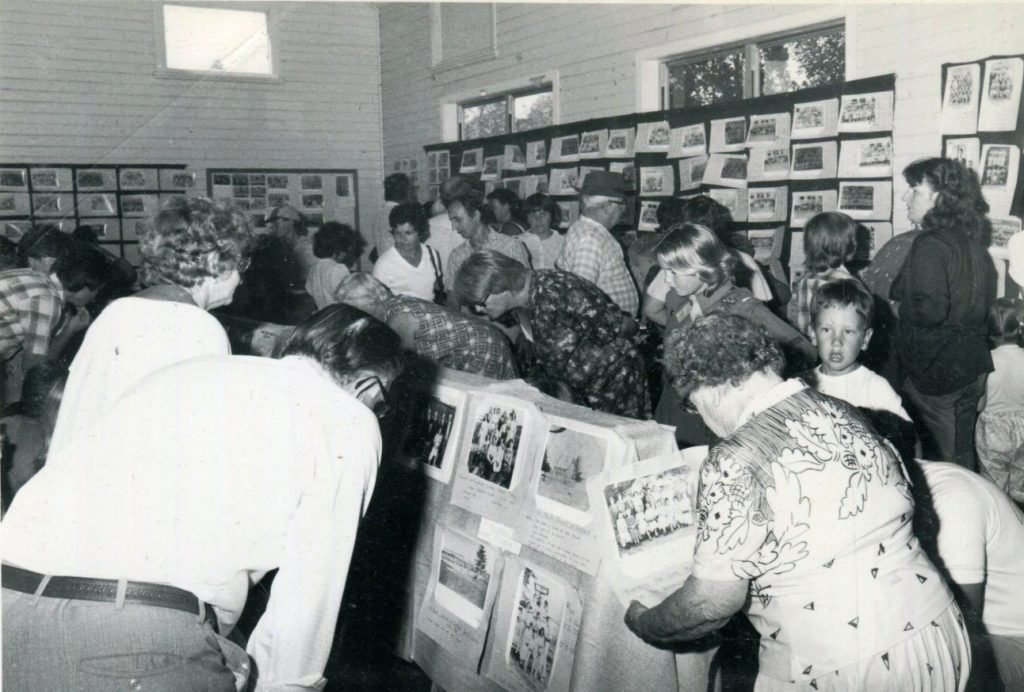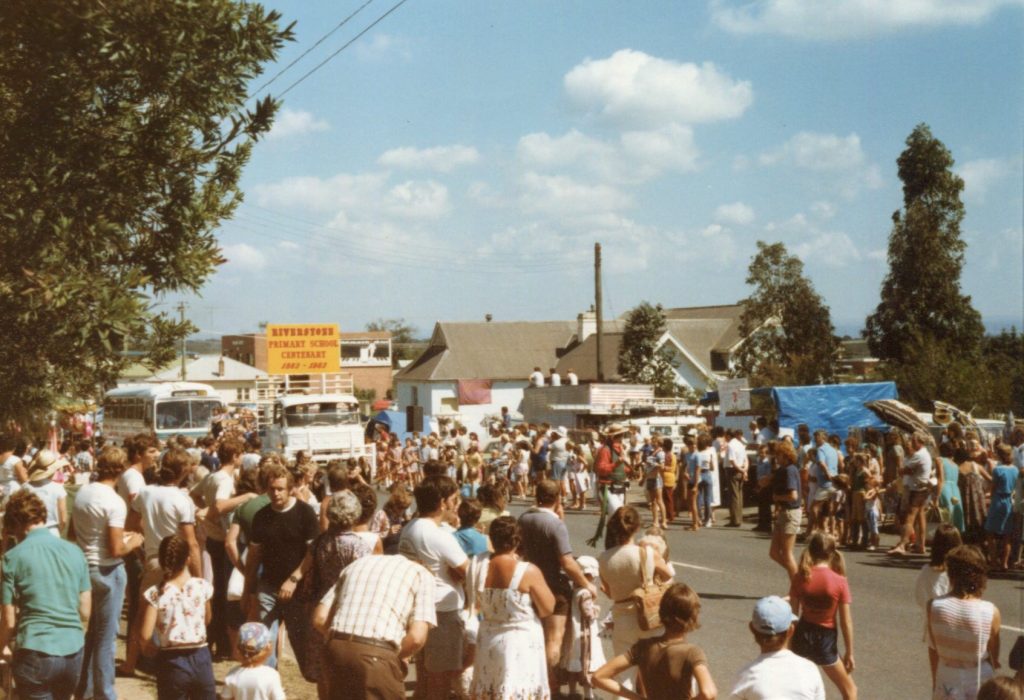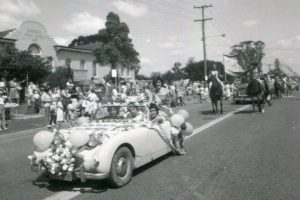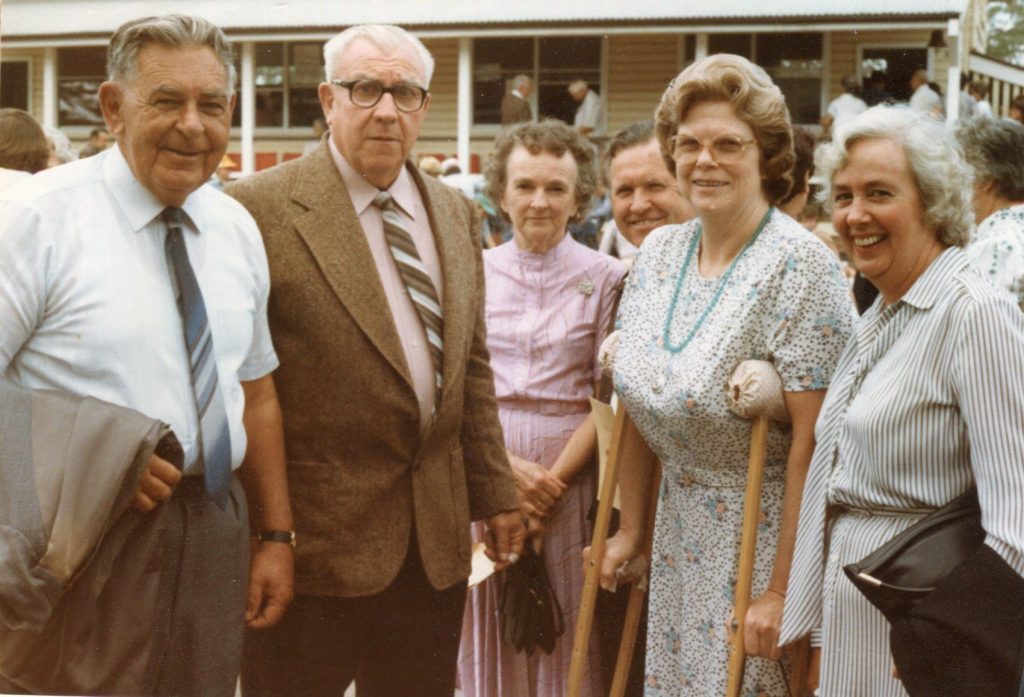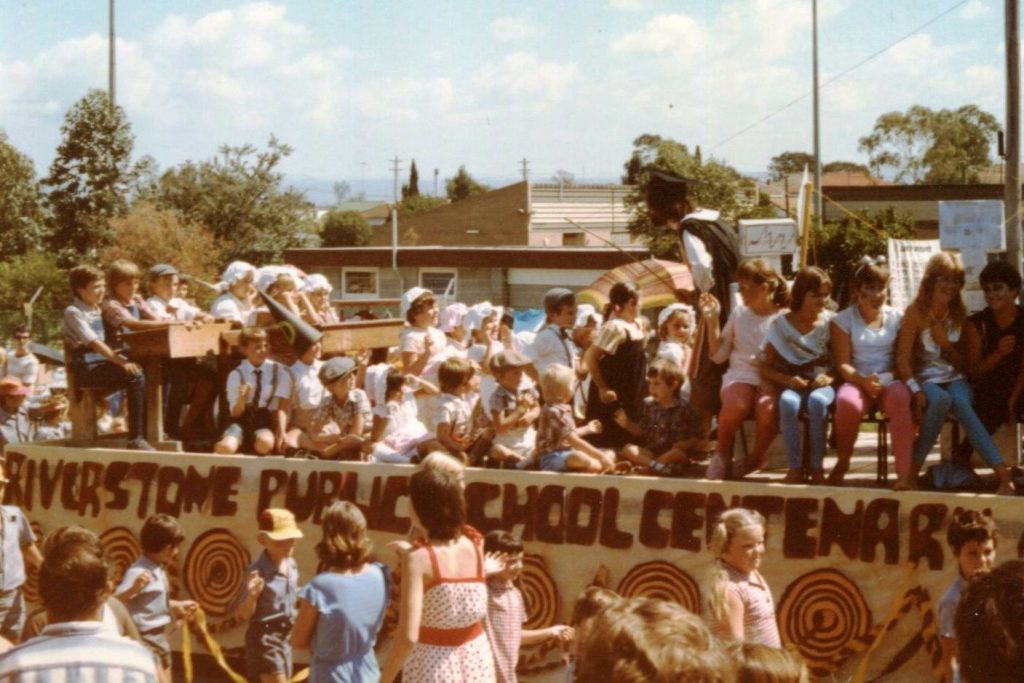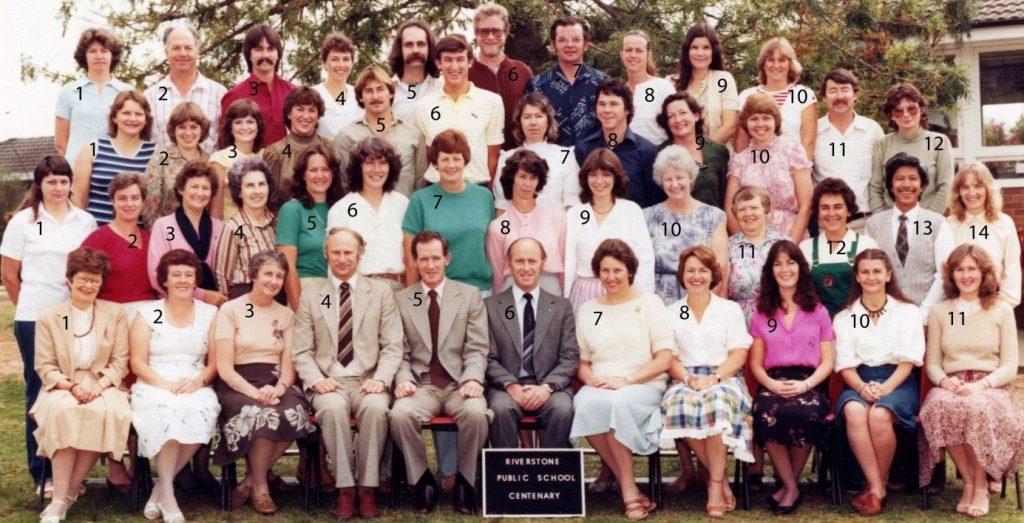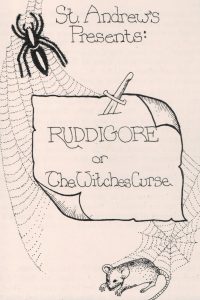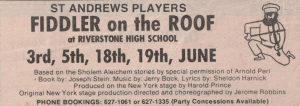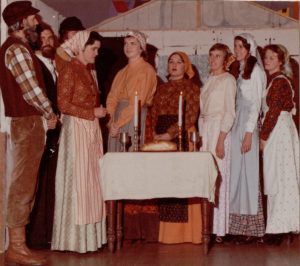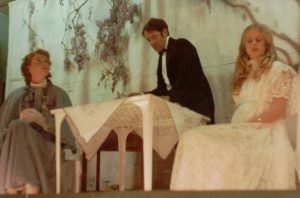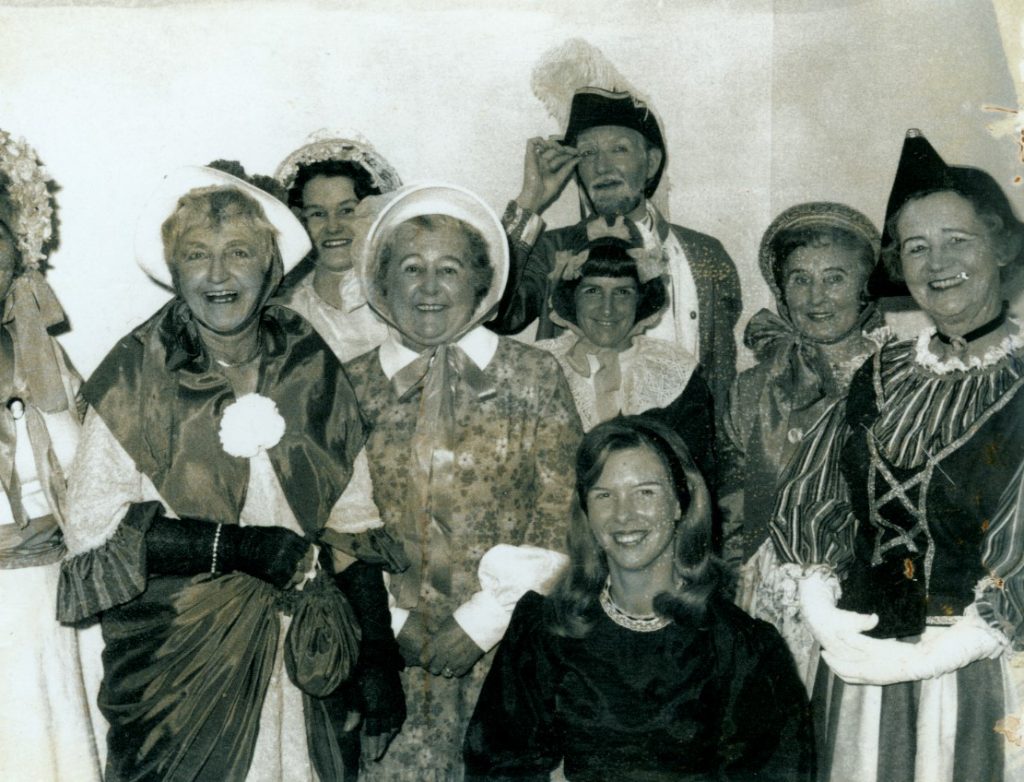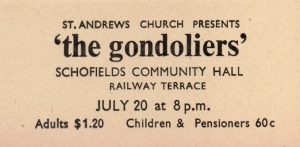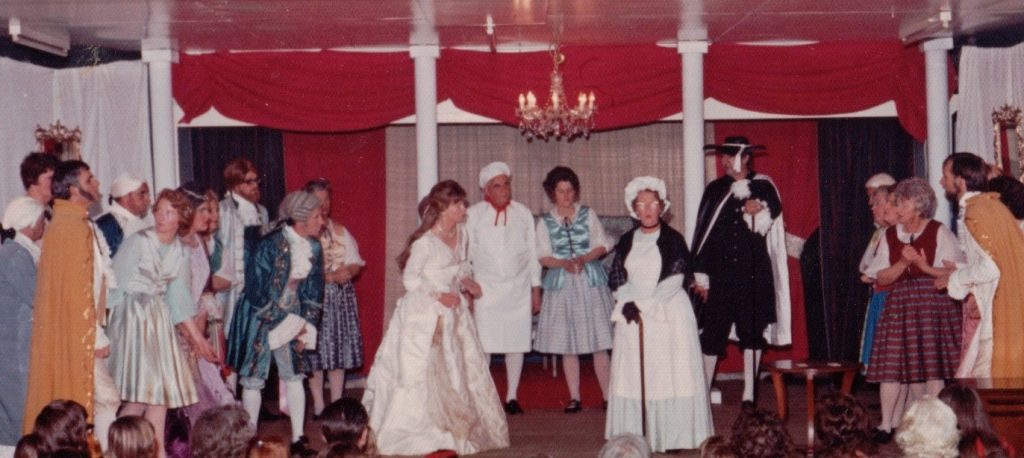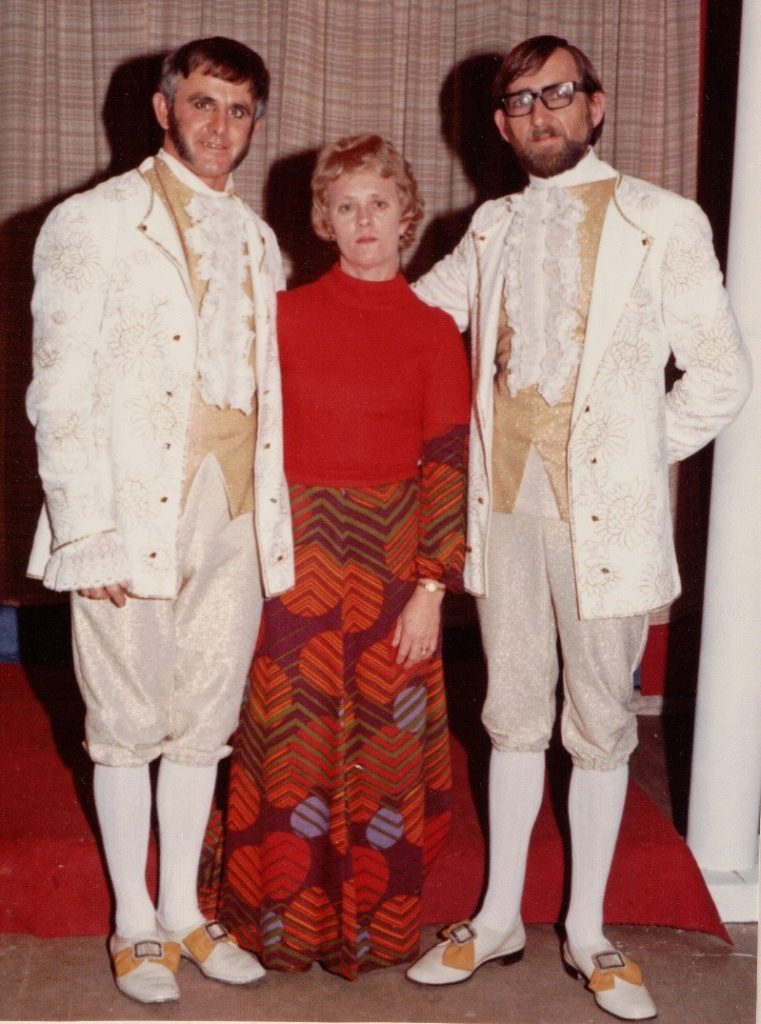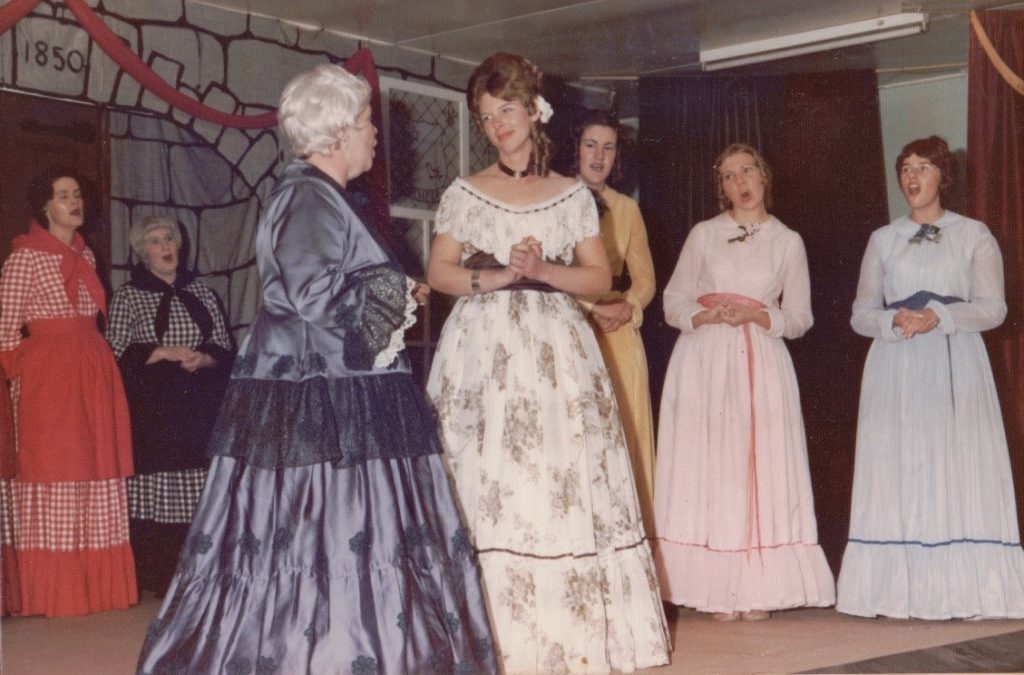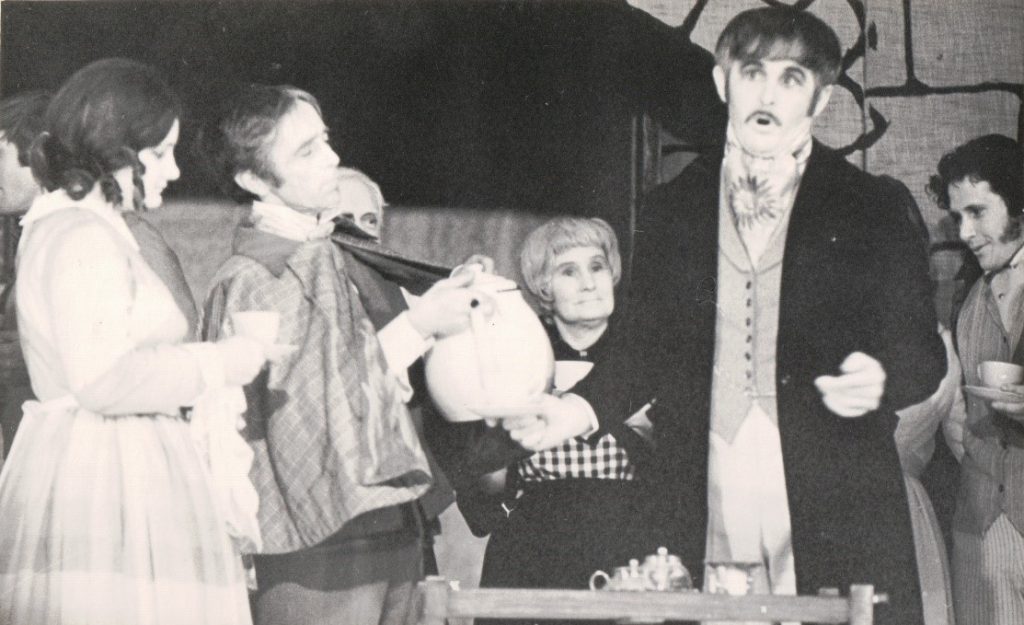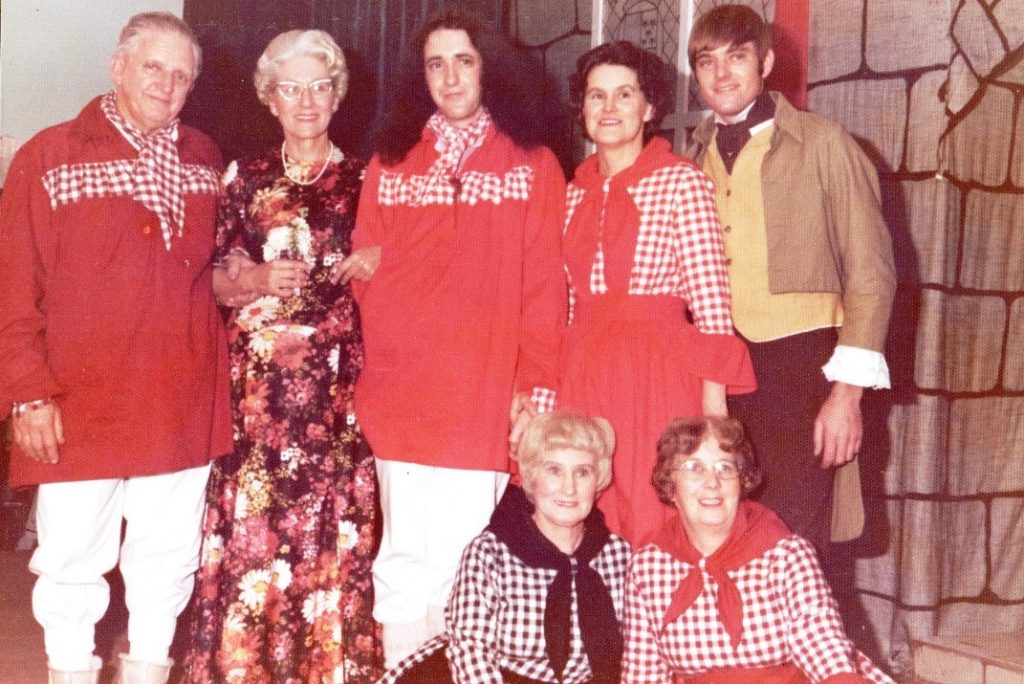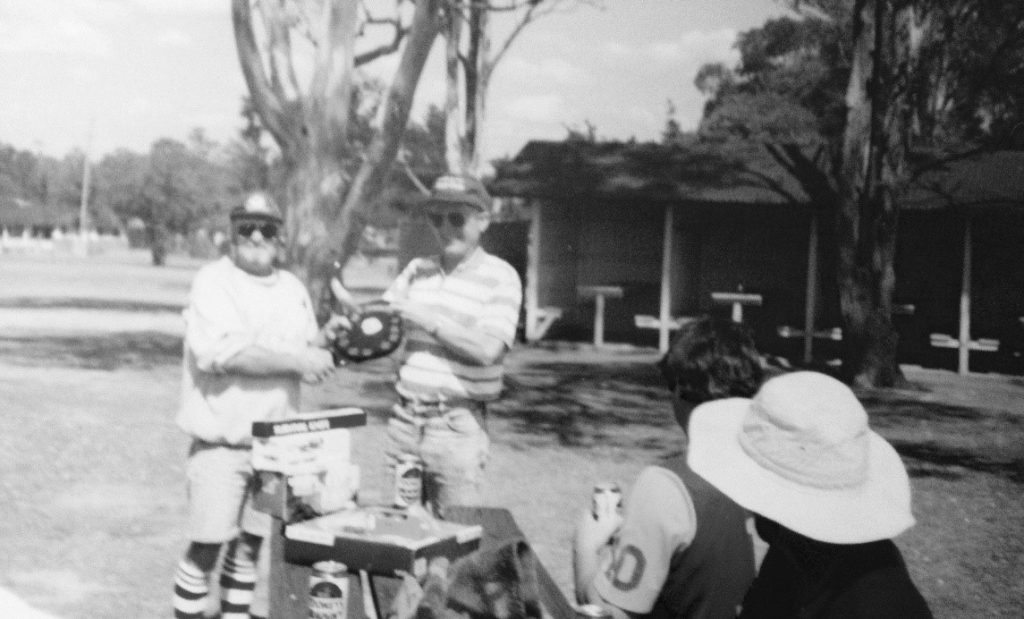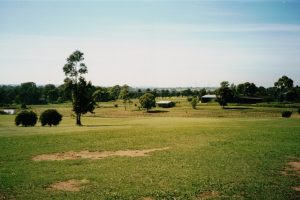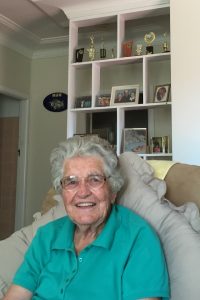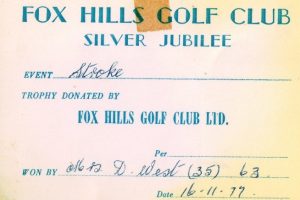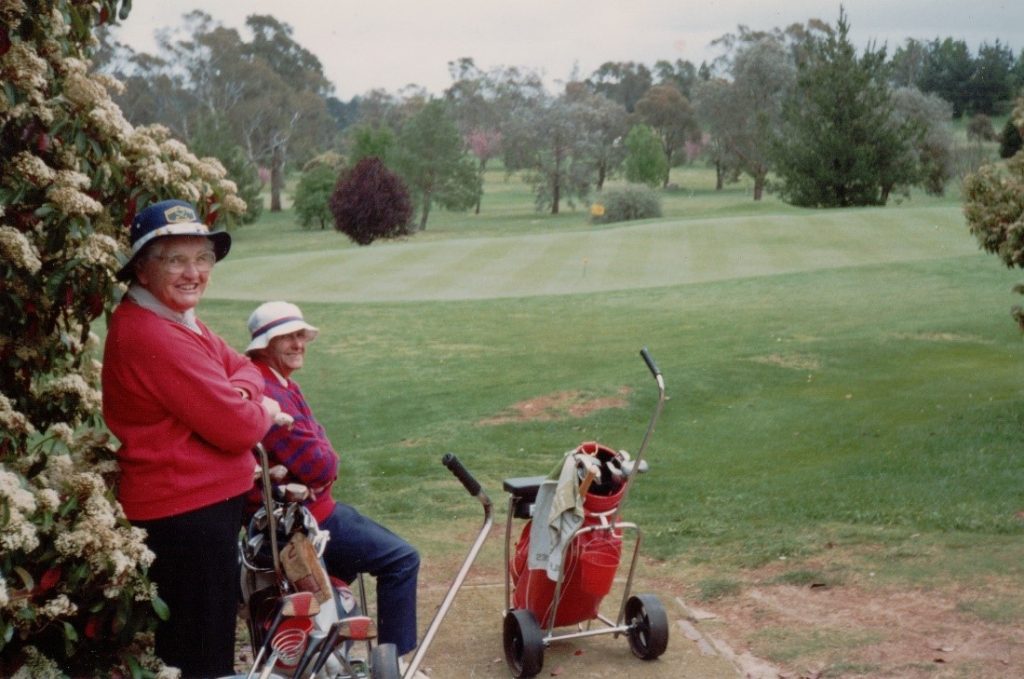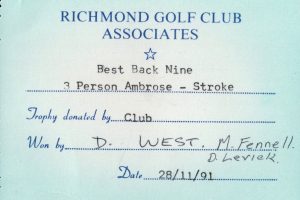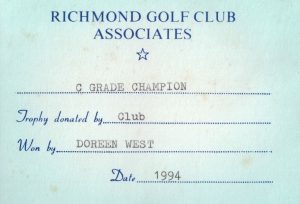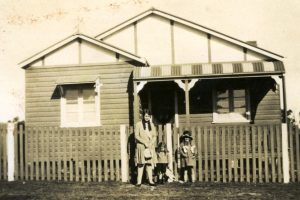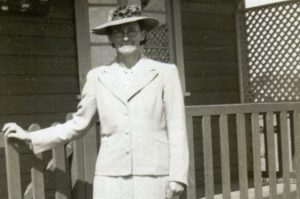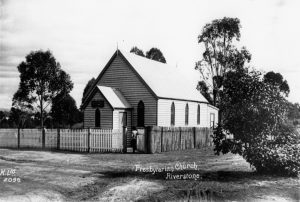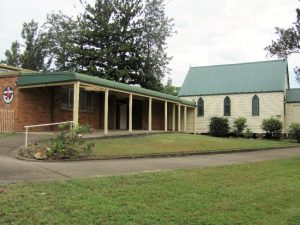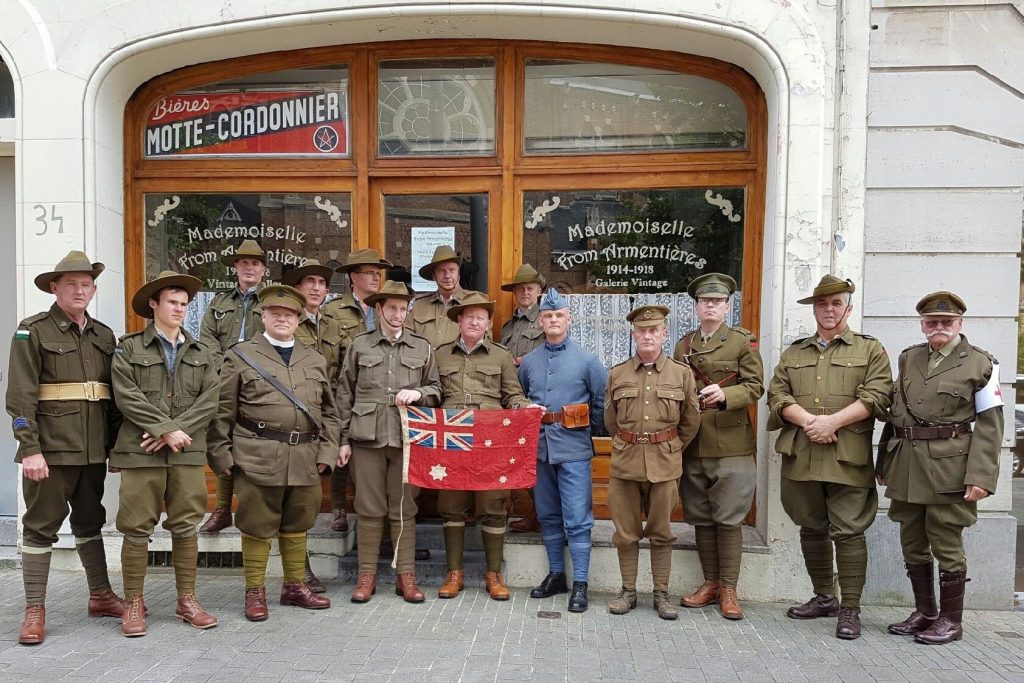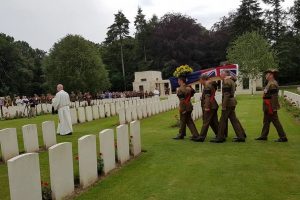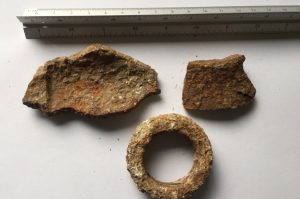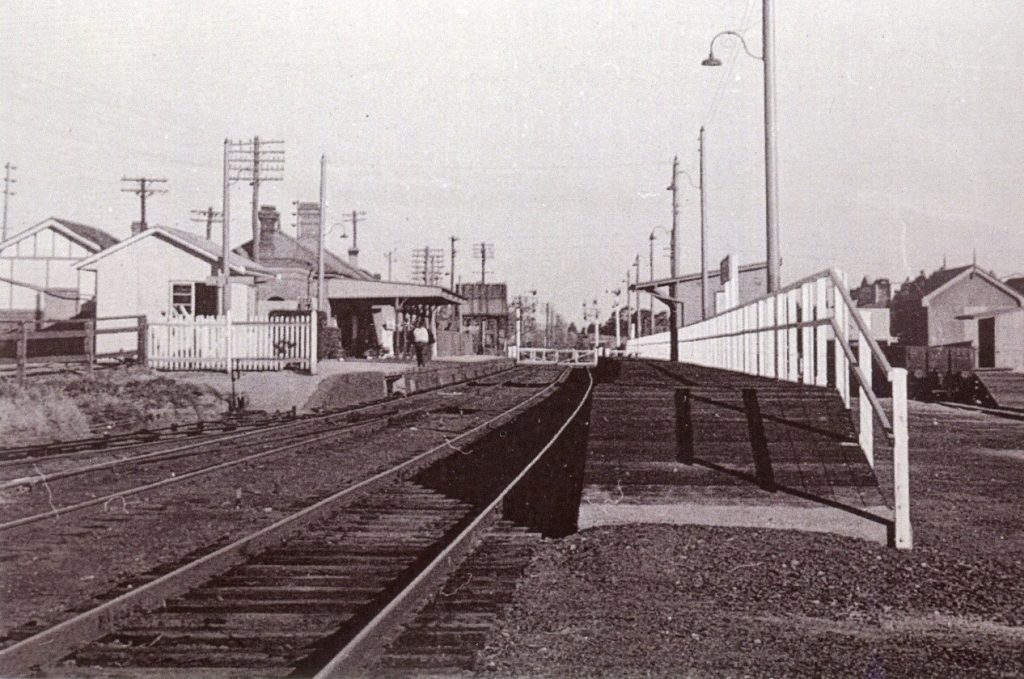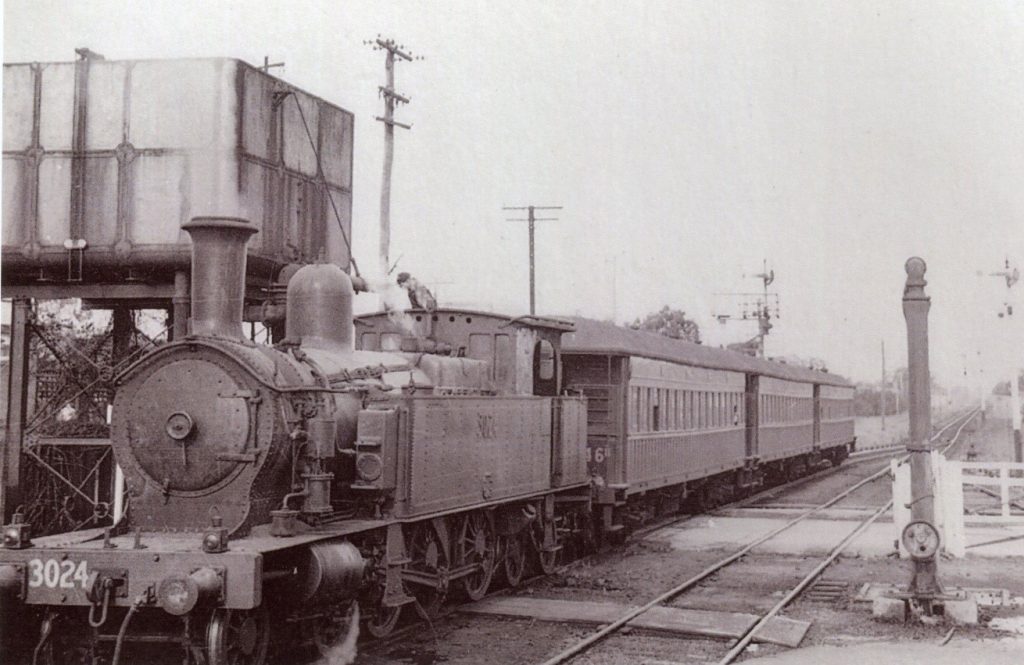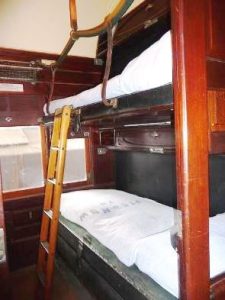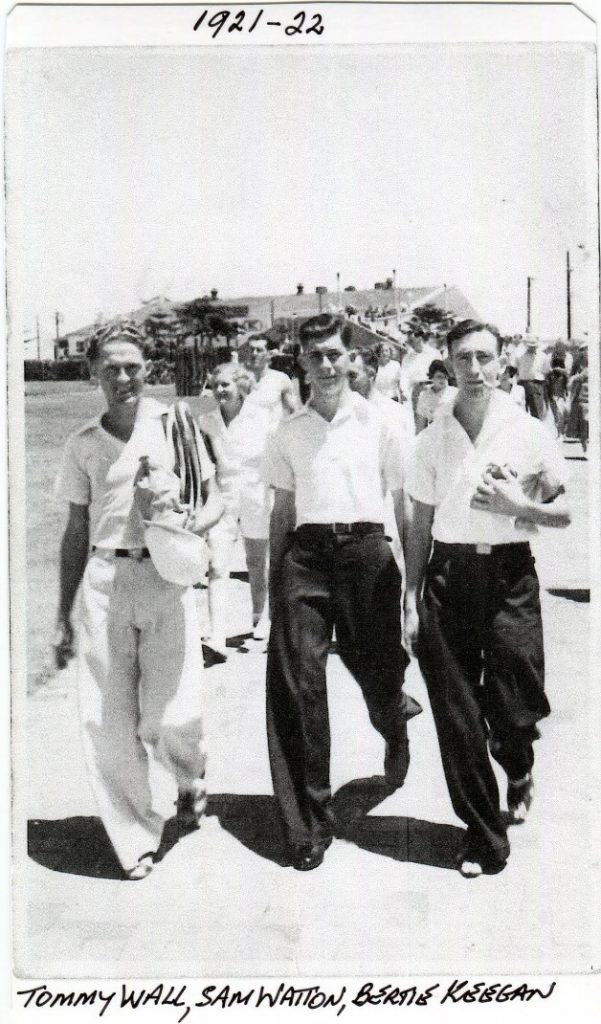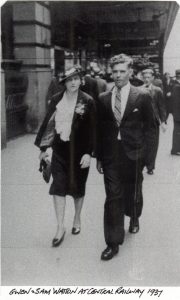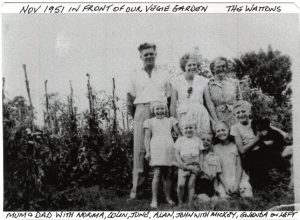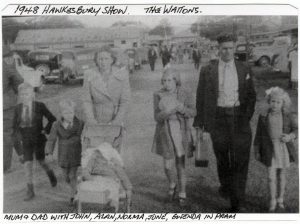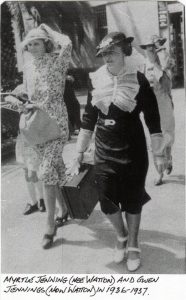by Judith Lewis
A play written for the Riverstone Public School’s Centenary in 1983..
Cast of Characters
| Riverstone | O’Connell flag bearer | Bob Gunton |
| Dodger Simpleton | Maurice O’Connell | George Freeman |
| 3 Dharug tribesmen | Mary O’Connell | John Cobcroft |
| Dharug flag bearer | Richard Rouse | Langton flag bearer |
| 8-10 Cheer Squad | Banjo Paterson | William Langton |
| Samuel Marsden | Richards flag bearer | Mary Langton |
| James Ruse | Ben Richards |
Scene: Old lady sits centre back stage in rocking chair. Garden seat at angle right of stage – close to, but not quite in front. Enter Dodger Simpleton, book under arm.
DODGER (to audience): Welcome to this very special edition of “This is Your Life”. Our guest tonight is someone we all know very well. Come with me and we’ll surprise her. (Goes across to old lady.) Excuse me, is your name “Riverstone”?
RIVERSTONE: Yes, young man, it is, and has been these past 170 odd years
DODGER: Well, my name is Dodger Simpleton and I’ve come to say “Riverstone, This is Your Life”.
Come with me I have a few old friends I’d like you to meet.
Walks towards front of stage, Riverstone using a walking stick. She sits on garden seat.
Listen I hear them coming now.
Aboriginal music played.
RIVERSTONE: Why, it’s my oldest friends – the Dharug aborigines.
Enter aborigines dancing to music.
DHARUG 1: We roamed the land of Riverstone for many hundreds of years before the white man came.
DHARUG 2: Do you remember our camps by the Eastern Creek?
RIVERSTONE: Indeed I do.
DHARUG 3: The last of our people died in 1926, but the spirit of our people will never die.
DODGER: The children of Riverstone will keep this memory alive. Just watch as we go to this commercial break.
Enter children (cheer squad) carrying Dharug flag and black and gold streamers.
CHEER SQUAD:
Dharug were warriors in days of old,
We’ve learned to fight, we’re the black and gold.
D H A R U G Yeah DHARUG
Dharugs move behind Riverstone’s chair, Flag Bearer moves to back left of stage, Cheer Squad leave stage.
DODGER to Riverstone: When the white man came you had some famous settlers. Do you remember this pair?
Enter Samuel Marsden holding a whip and James Ruse with a sickle.
SAMUEL: That’s the trouble with today’s generation James. Not enough discipline. Flog the fiends, beat the devil out of them. That’s what I say.
DODGER: Yes, it’s the Reverend Samuel Marsden with James Ruse. Your close neighbours, Riverstone. Do you remember them?
RIVERSTONE: Poking at Marsden with her stick.
I remember this fellow well. Called him the Flogging Parson. Named Marsden Park after him, they did. Had a property there. Kept convicts on it, used to have them tied to a whipping post and flogged. Only got rid of the post in recent years, I believe. Who’s your friend? I believe we’ve met briefly.
RUSE: James Ruse ma’am. I came to the colony as a convict in the First Fleet in 1788. Governor Phillip allowed me to farm land, near Parramatta, where I grew wheat, maize and vegetables. In 1819 I was granted 40 hectares of land on Eastern Creek at Riverstone near where Park Road is now. I farmed there for a short while before moving on to Campbelltown.
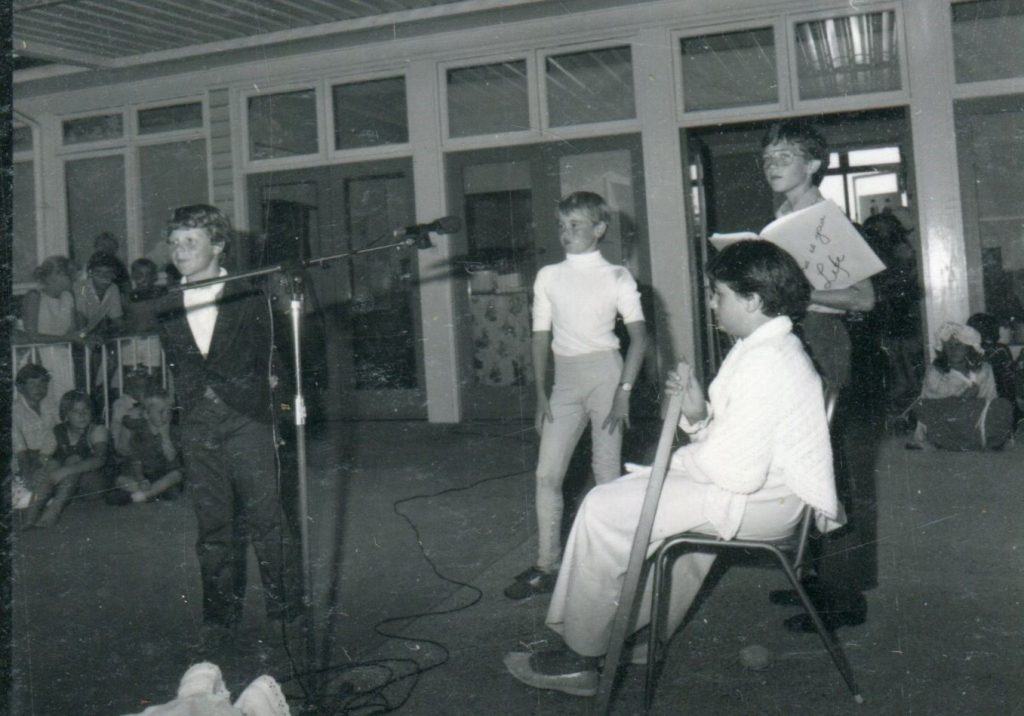
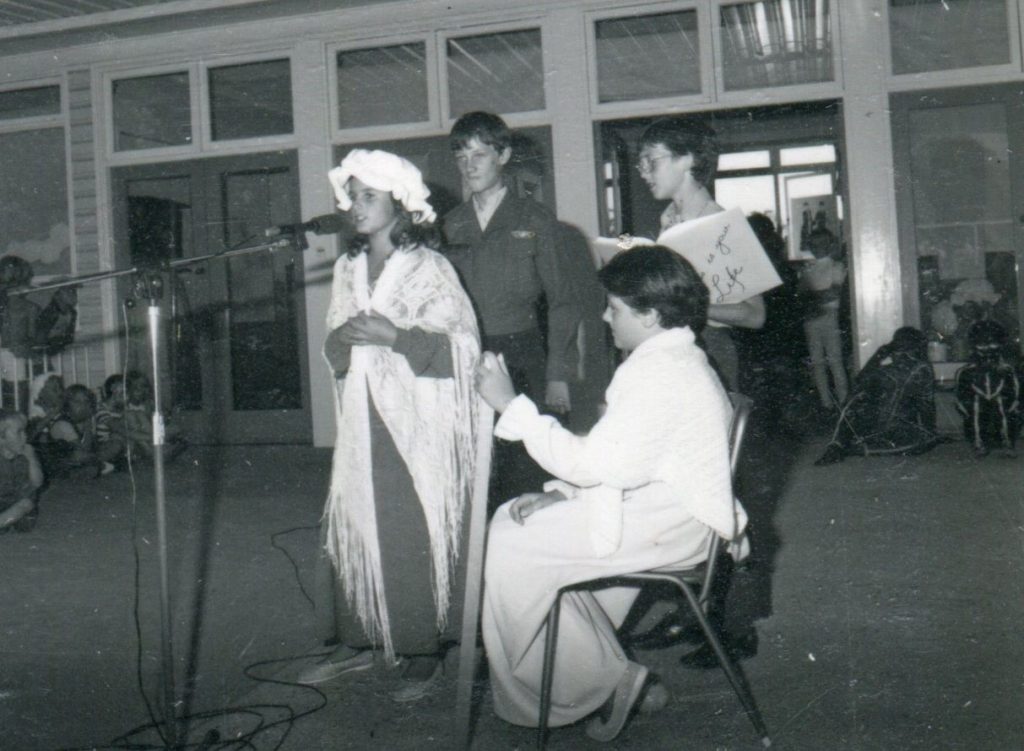
RIVERSTONE: Oh yes Mr. Ruse I do remember you. It’s good of you to come after all this time.
Marsden and Ruse move to behind Riverstone’s chair.
DODGER: And now, Riverstone, here are two of your very dear friends. But first, this commercial may jog your memory.
Enter children carrying O’Connell banner and cheer squad with green and gold streamers.
CHEER SQUAD:
O’Connell gave our town its name
The green and gold will win the game.
O’ C O N N E L L Yeah O’CONNELL
Flag Bearer moves to back of stage. Cheer Squad leave. Enter Maurice and Mary O’Connell.
RIVERSTONE: My dear friends Maurice and Mary O’Connell. I remember you calling in to “Riverston” with Governor Lachlan Macquarie on your way back from one of your trips with him to Bathurst.
MAURICE: That’s right. In 1810, when Mary and I married Governor Macquarie gave us 2,500 acres of fine bushland. We called it “Riverston” after my home in Ireland.
MARY: Governor Macquarie was very kind to my father and I after the dreadful treatment we received at the hands of the infamous John Macarthur and the wretched Rum Corps.
RIVERSTONE: There aren’t too many towns that can claim to be a wedding present. Maurice and Mary, it’s good to see you both.
Maurice and Mary move to behind Riverstone’s chair.
DODGER: Our next two guests only knew you briefly but each was famous in his own right and wanted to be with you on this special occasion. Listen to the music, it may give you a clue to the identity of one of them.
Music “Waltzing Matilda”. Enter Richard Rouse and “Banjo” Paterson, in riding gear.
ROUSE: I built my house close to you (it’s still standing). I rode regularly across your land to visit my sister, Elizabeth, at Jericho Farm (Windsor Downs is there today).
RIVERSTONE: I do recognise you. You’re Richard Rouse. You were a very important man in the early colony and I specially remember the fine horses you always rode. But, who is your friend?
BANJO: I only made your acquaintance briefly when I, too, rode across your lands on one of Richard’s fine horses. I mentioned his horses with the brand of the crooked R in my poem “The Bushman’s Song”.
RIVERSTONE: Why, you’re Banjo Paterson. I am honoured to meet you.
BANJO: Likewise. (Aside, only for school assembly. Actually, whilst I’m here I’d like to confront a couple of fellows who’ve been making a bit of a hash of my poetry – couple of chaps by the name of Woods and Bannerman),
DODGER: Thank you Richard Rouse and Banjo Paterson. This next commercial will help us to recognise our next guest.
Enter Flag Bearer carrying Richards’ flag and Cheer Squad with blue and gold streamers.
CHEER SQUAD:
Richards began with cattle few
Now we’re big and strong
We’re the gold and blue
R I C H A R D S Yeah RICHARDS
Flag Bearer moves to back of stage Cheer Squad leave.
Enter Richards and others dressed in butchers’ aprons.
RIVERSTONE: Ben Richards, you made my name known far and wide.
BEN: I’ve just come from the Meatworks. My, things have changed in the past 100 years haven’t they? When I began my meatworks in 1878 I had 4 butchers working for me. They worked at night and we loaded the carcasses onto the trains in the cool of the evening so we could get them to the sale yards before spoiling.
RIVERSTONE: Introduce me to your friends – I’m sure I know them.
BOB GUNTON: I’m Bob Gunton, ma’am. I was Ben’s first stockman. My wife Mary and I lived in a large cottage on the hill where the new meatworks now stands. It used to be called “The Kitchens” and Mary helped look after many of the butchers who lived there.
RIVERSTONE: Of course. I remember you and the other drovers bringing the herds of cattle down from across the mountains and up from the Flemington saleyards.
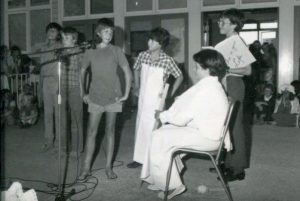
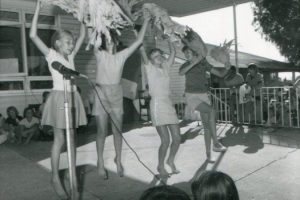
FREEMAN: I’m George Freeman.
COBCROFT: And I’m John Cobcroft. We’re two of Ben’s first slaughtermen.
RICHARDS: Did you know, Riverstone, that there was a suggestion, back in 1881, that the first public school should be built on the land where the new meatworks now stands?
RIVERSTONE: No, I didn’t. What changed their minds?
RICHARDS: Can’t you guess?
RIVERSTONE: No.
RICHARDS: The smell from the abattoirs would be too strong.
RIVERSTONE: Hasn’t changed much in 100 yea it?
DODGER: Thank you men. Richards and Butchers, Stockmen move to back of chair. Riverstone, this talk of schools leads us to our last guests.
Enter Langton Flag Bearer, Cheer Squad with red and gold streamers
CHEER SQUAD:
Langton taught in days of old
We’ve learned to win
We’re the red and gold
L A N G T O N Yeah Langton
Flag Bearer and Cheer Squad move back to others.
Enter William and Mary Langton.
RIVERSTONE: Why, it’s our school’s first teacher, William Langton, and his wife, Mary.
LANGTON: Mary and I came to live here in 1883. We only stayed 3 years but they were busy years for both of us.
MARY: Indeed they were. William and I and six children lived in the two room cottage attached to the school.
LANGTON: Yes and taught 75 children between us using one schoolroom and a weather shed. Did you know Mary taught the Junior Classes for 2 years and the only salary she received was the Sewing Teacher’s allowance.
MARY: And when I wrote asking for some reimbursement the Department told me I wasn’t entitled to it.
LANGTON: There were compensations though. The children were great kids.
RIVERSTONE: I know, I’ve watched them. Dodger, thank you. This has been a very happy day for me. It’s made me feel yes younger. It does us good to remember our heritage. I trust all my children are proud of their school and their town.
DODGER: I’m sure they are. I hope they’ll join us in singing our school song as we remember “Riverstone, This is Your Life”.
Riverstone Public School Song
I wrote the school song for the School Centenary. It was sung by the whole school, lead by the choir and conducted by teacher Mary Gillespie. I later added the last verse not mentioned in the original version.. It is sung to the tune of “The Carnival is Over”.
The Governor’s gift to Maurice O’Connell’,
When he married Mary Bligh.
Thousands of acres of fine bushland,
Riverston it’s name shall be.
The settlers came and built their homesteads,
Carted timber, farmed the land,
Then Ben Richards built his meatworks
And our small town did expand.
In ’83 they built a school here.
‘Twas only small, but how it’s grown.
This school now is our school
And its name is Riverstone.
The Dharug tribes no longer roam here.
Will Langton’s teaching days are done,
But “Knowledge and Friendship’s” still the motto
Of our school called Riverstone
Of our school called Riverstone.

